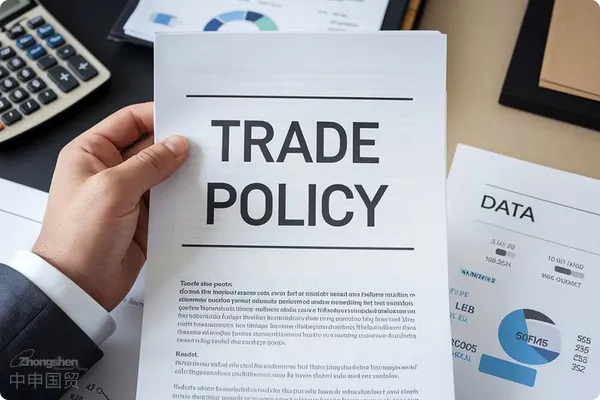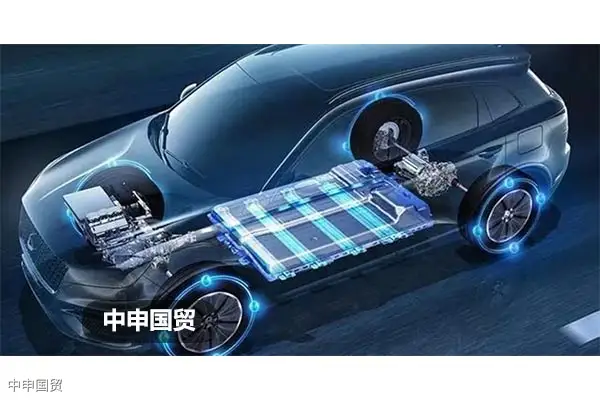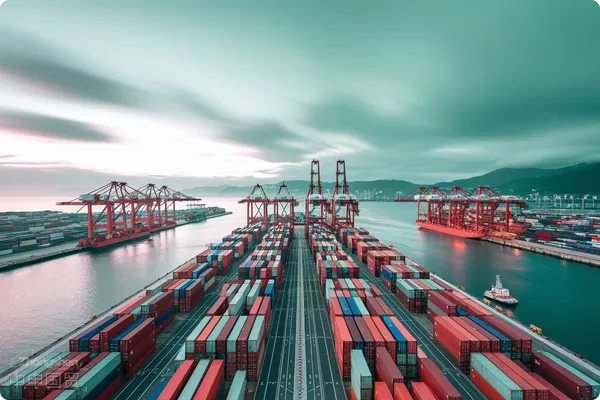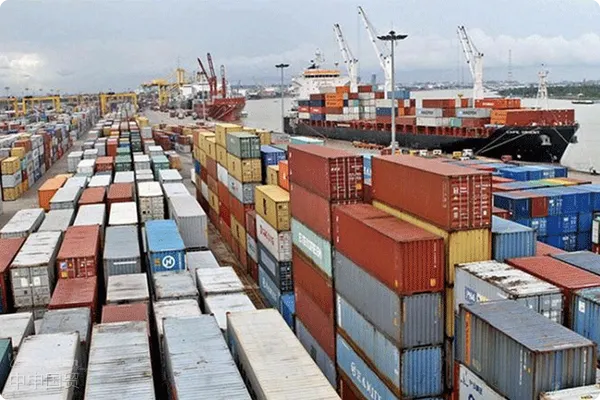- Shanghai Zhongshen International Trade Co., Ltd. - Two decades of trade agency expertise.
- Service Hotline: 139 1787 2118
With the digital transformation of the global automotive industry, connected vehicles (VCS) and autonomous driving systems (ADS) have become focal points of technological innovation. However, the U.S. Department of Commerces Bureau of Industry and Security (BIS) recently released a groundbreaking proposal to ban the import and sale of VCS and ADS technologies associated with China and Russia starting in 2027. Faced with such significant industry changes, how should Chinese enterprises adjust their strategies to secure a place in the global supply chain?

On September 23, 2024, the U.S. Department of Commerces Bureau of Industry and Security (BIS) issued an important proposal aimed at enhancing the security of the connected vehicle supply chain. This proposed rule would prohibit the sale or import of specific hardware and software components with sufficient ties to China or Russia, focusing on vehicle communication systems (VCS) and autonomous driving systems (ADS). The rule applies to vehicles driven on public roads, including cars, trucks, and buses, and will be implemented in phases, with software restrictions taking effect from the 2027 model year and hardware restrictions from the 2030 model year or January 1, 2029.
I. Definition and Scope of Connected Vehicles
According to the BIS definition, a connected vehicle is a motor vehicle equipped with onboard network hardware that communicates with external networks or devices through short-range communication, cellular telecommunication, satellite communication, or other wireless communication technologies, covering passenger cars, trucks, buses, etc.
Key technology areas include:
Vehicle Connectivity Systems (VCS):Used to support wireless data transmission between vehicles and external networks (such as via Wi-Fi, cellular networks, satellite communication, etc.).
Autonomous Driving Systems (ADS):Systems supporting autonomous driving functions, covering perception, decision-making, and execution capabilities.

II. Prohibited Transactions
The BIS proposal clearly lists several categories of prohibited transactions, specifically targeting VCS and ADS technologies designed, developed, manufactured, or supplied by China or Russia, as detailed below:
Prohibition on VCS hardware imports
Includes but is not limited to key components such as microcontrollers, network or communication modules, satellite navigation systems, and antennas. BIS is concerned that these hardware components may contain backdoors or vulnerabilities, posing a threat to U.S. national security.
Prohibition on the import and sale of vehicles containing restricted software
Vehicles equipped with ADS software developed by China or Russia will be banned from sale and import, as this software may enable remote control of vehicles through malicious code.
Restrictions involving manufacturers controlled by China or Russia
Regardless of whether Chinese or Russian technology is directly used, vehicles from manufacturers controlled by these countries will also be prohibited from sale in the U.S.
Determining whether an entity is controlled by China or Russia
BIS provides multiple examples to help companies assess whether they are controlled by China or Russia, aiming to assist businesses in avoiding high-risk suppliers.
III. Compliance Mechanisms
To ensure effective enforcement of the prohibited transactions, BIS has designed multiple compliance mechanisms, including annual compliance declarations, general authorizations, and special authorizations:
Annual compliance declaration
Companies must submit an annual compliance declaration, detailing the sources of hardware or software, technical specification sheets, and supply chain due diligence documents.
General authorization
Applies to low-volume manufacturers or vehicles intended for display or testing, allowing limited transactions to continue without notifying BIS.
Special authorization
For transactions that do not meet the conditions for general authorization, companies must apply for special authorization, providing detailed transaction information and risk mitigation measures.
IV. Compliance Timeline
BIS has designed a transition period for the rule:
(1)VCS硬件:Importers may continue imports until January 1, 2029, with hardware for older vehicle models applicable until 2030.
(2)ADS軟件:Vehicles containing restricted software will be banned from entering the U.S. market after 2027.
V. How Chinese Enterprises Should Respond
Facing this proposed rule by the U.S. Department of Commerces Bureau of Industry and Security (BIS), aimed at strengthening the security of the connected vehicle supply chain, Chinese companies must not only address short-term compliance requirements but also undertake profound adjustments from a global strategic perspective. Below are the key strategies and action plans Chinese companies should adopt in response to such rules:
Supply chain diversification and technological self-innovation
The BIS proposed rule reflects the U.S. governments accelerated decoupling from China in technology and supply chains. To counter this decoupling strategy, Chinese companies must accelerate supply chain diversification, reducing reliance on single markets or supplier countries, particularly those subject to BIS regulations.
? Supply chain diversification:Companies should actively seek alternative suppliers, especially for components and technologies from other countries, ensuring a globally distributed and diversified supply chain to mitigate compliance risks. Simultaneously, companies should evaluate every link in their supply chains, particularly in sensitive technology areas (such as VCS and ADS hardware and software), to ensure they are not subject to U.S. restrictions.
? Technological self-innovation:The risks of relying on foreign technology are increasingly intensifying, necessitating Chinese enterprises to vigorously promote independent R&D and innovation, especially in critical areas such as autonomous driving technology, in-vehicle communication equipment, and cybersecurity. Through independent innovation, companies can not only reduce dependence on foreign technology but also gain technological autonomy and enhance competitiveness in the international market.
Global Market Strategy Adjustment
The restrictive measures introduced by the U.S. are not universally applicable. Chinese enterprises can continue product sales and technology exports by expanding into non-U.S. markets, particularly emerging markets and other developed economies.
? Expansion into Non-U.S. Markets:With increasing barriers to entry in the U.S. market, Chinese enterprises can focus more on markets in Southeast Asia, Africa, South America, and Europe. In these regions, especially where technology and market regulations are more open, companies can continue promoting connected vehicle technology and autonomous driving solutions to avoid global business contraction due to U.S. market restrictions.
? Strategic Partnerships and M&A:Chinese enterprises can enter other global markets through strategic partnerships with non-U.S. companies or even via mergers, acquisitions, or joint ventures. This approach not only facilitates market access but also helps circumvent U.S. export controls and market entry restrictions by acquiring advanced technologies and production capabilities from other countries.
Strengthening Compliance Management and Risk Assessment
Chinese enterprises must prioritize compliance management, especially when operating in the U.S. market or conducting global cross-border business, to ensure adherence to local laws and regulations. BIS rules emphasize that companies must verify whether any part of their supply chain involves Chinese or Russian technology or control. Therefore, enterprises must establish robust compliance management systems to avoid being listed as restricted entities.
? Establishing a Compliance Department:Companies should set up dedicated compliance departments to continuously monitor regulatory policies across global markets and ensure that supply chains, partners, and products meet the compliance requirements of target markets.
? Supply Chain Due Diligence:Conduct thorough background checks on all suppliers and partners to ensure they are not listed on the U.S. Entity List. Additionally, companies must regularly assess the origins of technologies and products to avoid using components or software from controlled Chinese or Russian entities.
Leveraging International Regulations and Bilateral Trade Agreements
Amid global trade dynamics, Chinese enterprises can mitigate risks posed by U.S. market restrictions by participating in international standard-setting and leveraging bilateral or multilateral trade agreements. For example, through cooperation agreements with regions like the EU, ASEAN, and Africa, companies can promote the internationalization of their technical standards, enhancing compliance and competitiveness in these markets.
? International Standardization:Enterprises should actively engage in international standard organizations (e.g., ISO, IEC) to develop relevant technical and product standards, ensuring compliance with entry requirements in most global markets. This not only elevates their international reputation but also lays the groundwork for market access elsewhere.
? Bilateral or Multilateral Cooperation Agreements:Chinese enterprises can leverage free trade agreements (FTAs) and economic partnership agreements (e.g., RCEP) signed between China and other countries/regions to strengthen technological collaboration and trade ties. Regional agreements help reduce the impact of technological decoupling on international operations.
Global Capital and Talent Deployment
As U.S.-China technological decoupling deepens, Chinese enterprises must globalize their capital and talent strategies to preserve and enhance long-term competitive advantages.
? Capital Globalization:Companies should expand international funding sources through overseas investments, listings, and fundraising, while diversifying risks via global capital markets. For instance, IPOs or bond financing in European or other Asian markets can reduce reliance on a single capital market.
? Talent Globalization:In technology-intensive industries, talent is a critical resource. Enterprises should intensify global recruitment and training efforts, especially in autonomous driving, AI, and cybersecurity, to attract top-tier experts and engineers. Establishing international R&D centers can drive technological innovation.
Strengthening Data Security and Cybersecurity Protection
A core focus of the BIS proposal is preventing data collection or leakage through connected vehicles. Thus, while enhancing product safety and compliance, Chinese enterprises must bolster their data security and cybersecurity capabilities.
? Data Encryption and Privacy Protection:Companies should strengthen security measures for connected vehicle and autonomous driving systems, adopting advanced data encryption to safeguard user data during transmission and storage. Additionally, compliance with global data privacy regulations like GDPR ensures lawful processing of user information.
? Cybersecurity Assessment:Before products enter the market, companies should conduct comprehensive cybersecurity assessments of their hardware and software to ensure there are no security vulnerabilities or backdoors, preventing malicious attacks or manipulation. This will help enhance market acceptance and trust in the products, especially in regions like Europe and America where data security is highly prioritized.
Conclusion
The recent BIS rules targeting technological restrictions on China and Russia aim to protect U.S. supply chain security and national interests. Companies must strengthen compliance management, optimize supply chain structures, and ensure their technology and market strategies align with future international trade requirements.
Related Recommendations
? 2025. All Rights Reserved. 滬ICP備2023007705號-2  PSB Record: Shanghai No.31011502009912
PSB Record: Shanghai No.31011502009912










